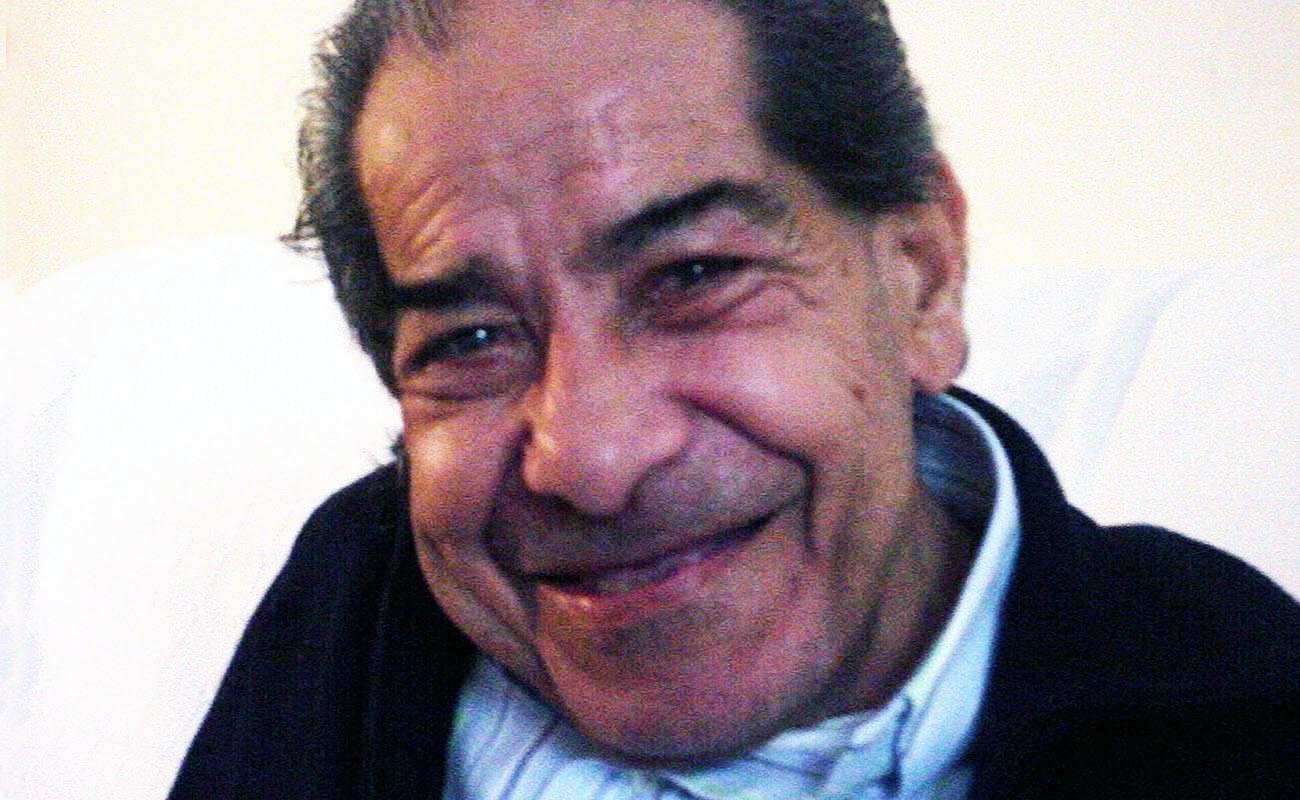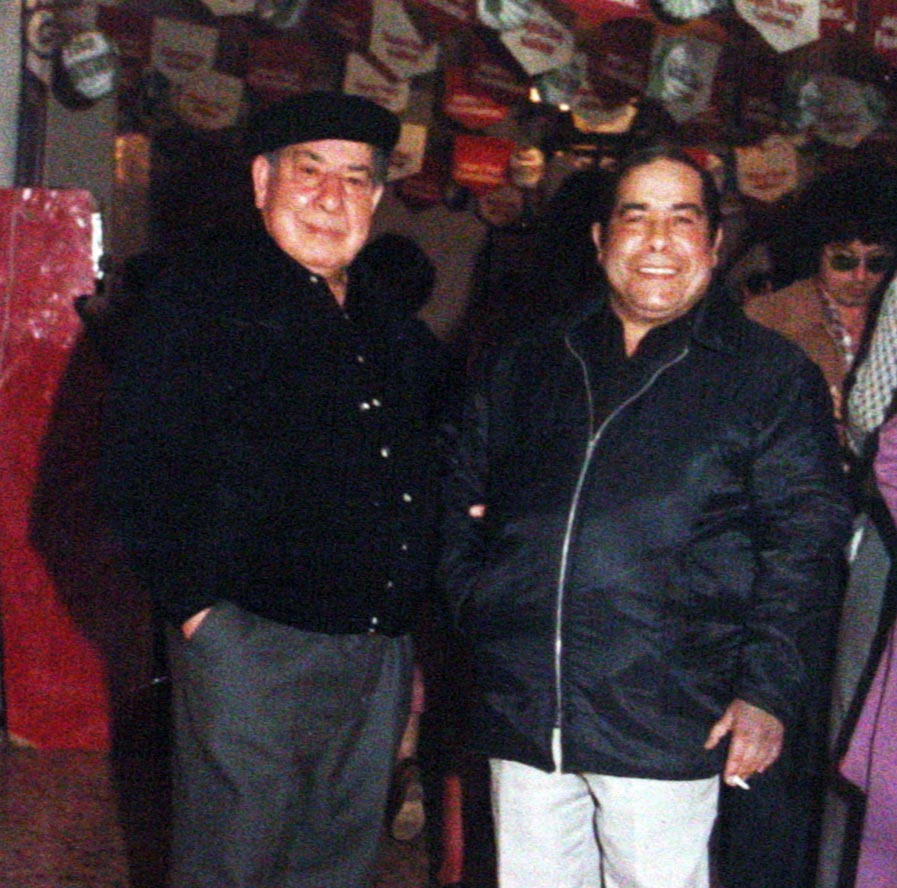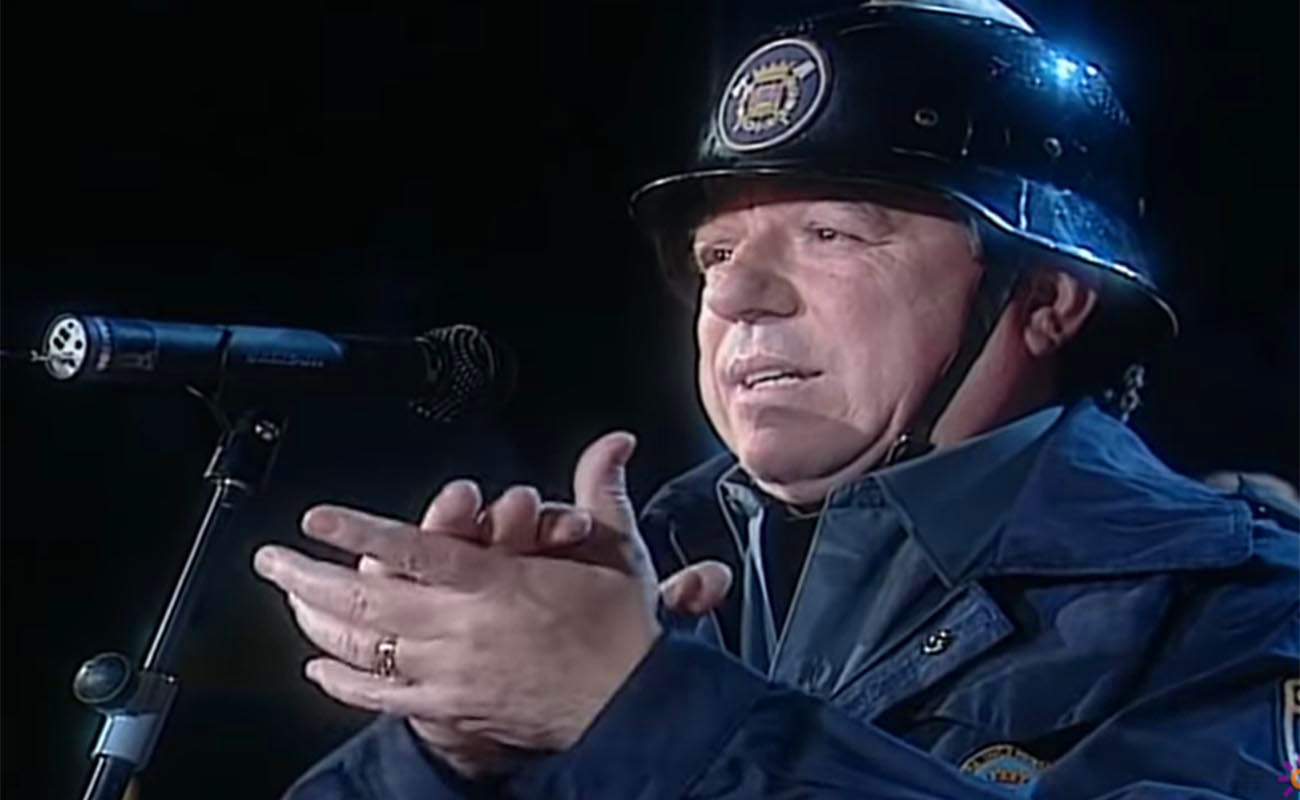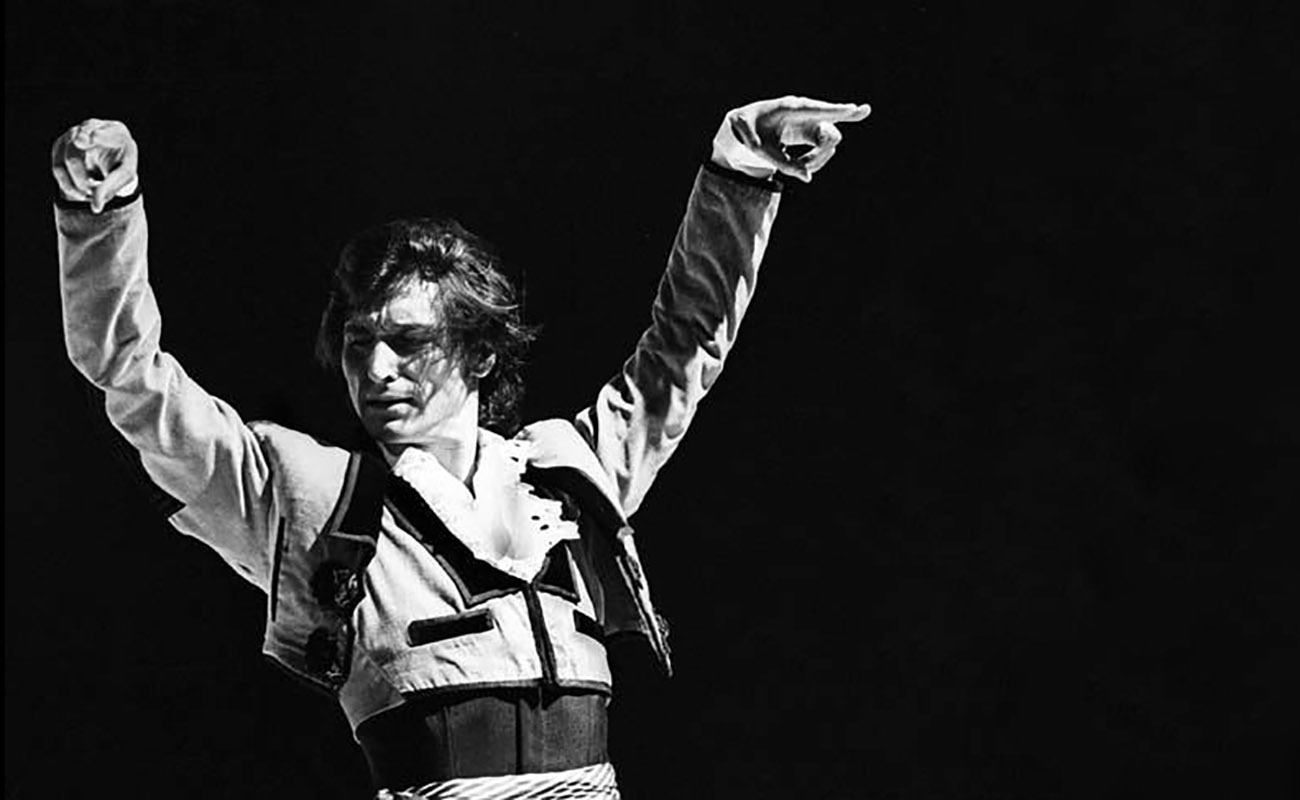El Gineto de Cádiz: memories of a time, a place, a feeling
Like everyone else, I fell in love with El Gineto, widely known in Cádiz at the time, but nearly unknown elsewhere. I resolved to interview him someday, a meeting that did not take place until the summer of 2007 at Gineto’s home.

On July 7th, 2001, I attended the Reunion de Cante Jondo of La Puebla de Cazalla in which the excellent program featured artists from the city of Cádiz such as Santiago Donday, Felipe Scapachini and Encarnita Anillo.
Towards the end of the first part, an older man, who didn’t actually sing or dance, sprinkled the large patio with all the salty flavor of his hometown in generous quantities, and refreshed us with the joy of his cheerful presence. Juan Jiménez Gineto, (Cádiz 1925-2010), uncle of singer Juan Villar (Juanito el de la Gineta when he started out), approached the microphone limping. Murmuring among the audience gave away the general skepticism in light of the gentleman’s physical appearance. This man with a still handsome face even in old age, addressed the audience, speaking without really saying anything in particular, beginning to sound like bulerías. He spoke, danced, declared, sang, sentenced, laughed, gesticulated… The large patio filled with the aroma of times past, black and white flamenco times when there were no mobile phones or lactose-free milk, and everything was of the moment. What a wonderful mystery of how there could be so much art in so little, and the audience showed their appreciation with warm spontaneous applause at every moment.
Like everyone else, I fell in love with El Gineto, widely known in Cádiz at the time, but nearly unknown elsewhere. I resolved to interview him someday, a meeting that did not take place until the summer of 2007 at Gineto’s home. By then, he was dealing with serious health issues which made communication challenging. Nevertheless, we were able to chat animatedly, and Gineto illuminated the cozy living room with his enthusiasm and a huge smile.
I hardly asked him any questions, he simply unravelled memories of his childhood and youth, amidst parties, travels and anecdotes, a flamenco life that no longer existed other than in his mind.
Gineto speaks
I’m a first cousin of Perla de Cádiz, and brother of Pablito de Cádiz, known by everyone as El Gineto de Cádiz. My grandfather gave me that nickname. I used to go to the livestock fairs and was a skilled rider. My sister Pilar was called La Gineta, Juan Villar’s mother. Juan was also known as “el de la Gineta” (son of La Gineta).
I’m from here, the Santa María neighborhood. As a kid I saw many terrific dancers. The place where people have sung and danced best in the world is right here in Cádiz. Jerez too, but different. Many many people from here were terrific dancers and singers, like my aunt Rosa la Papera, mother of La Perla, and my sister’s mother as well. And Anzonini, what arms and what hip movements! And Paco Valdepeñas, what a dancer! Without being from Cádiz. And Faíco, I was with him in Torres Bermejos in Madrid with La Perla and La Piquer, they always took me to the parties, and I drank a lot of alcohol to make it through the night.
I knew many great artists who are no longer with us, I start talking about them and…[he cries]. But here we are, and life is so hard. I began as a small child with that famous show of Encarnación López Argentinita and her sister Pilar López who died not long ago at the age of 95, Las Calles de Cádiz it was called. I was very small for my age…I went out dancing and the people loved it. There’s a famous photo of the company with my brother Pablito, Adela la Chaqueta, la Macarrona… Ignacio Espeleta is also there in the role of a shoemaker, a huge guy, and fat, but he sang alegrías better than anyone else in Spain. When he died they put Pericón in his place, he knew all the vocals: Plaza de la Catedral, es un verdadero encanto, porque se parece mucho a Melilla con su campo…[The Plaza of the Cathedral, is truly enchanting, it reminds me of the fields of Melilla]. Pericón would take me to the fiestas, and Concha Piquer. La Jeroma was also there, and Malena Loreto, and my father who dressed up like a night watchman, and a girl called Paquita who’s still alive, she’s the same age as me…it’s so hard to remember all the people. Afterwards, Argentinita went to América and died there. And Pilar López said, “My sister has died, I’m going over there to make a really good company”, but I was just a child and couldn’t go.
Later on, when I was 20, I went to Madrid with a small suitcase, a suit, a jacket, trousers and 13 pesetas, and I made my way to Villa Rosa, a tablao they opened. This very well-dressed guy, very flamenco, comes over to me, says hello and “where are you from boy?” “I’m from Cádiz sir”. “Go on! That’s a terrific place, I’ve sung there many times”. It was Juan Talega! the best singer of soleá in all Spain. And he asks “what do you know how to do?” I tell him I sing and dance my little things. So Talega tells me to go to the office, and in the hallway there are like twenty artists, but big stars! Manolo Caracol, la Niña de los Peines, Tomás Pavón, there were dancers from Triana, one from Jerez, el Güiza, and another from Madrid, el Porra who drove people crazy with his dancing. And plenty of bottles, and endless trays of food, cured ham and all that, and I was famished, I swear by my mother. So I got cleaned up, found a cheap place to stay, and went out each night with the group to keep rhythm. I’m not a great artist, but I’m pure gypsy, no offense intended to anyone. I ended up working with Manolo de Huelva and Niño Ricardo, just imagine the level there was!
Afterwards, I spent three years with Lola Flores with her show La Guapa de Cádiz, and I made two movies with her, Una Señora Estupenda and La Martingala. After that I went with Valderrama who wanted a good Cádiz dancer to do bulerías in his show. Manolo Vargas went with the show Ramillete, but then there were problems, some people don’t handle alcohol well, know what I mean? And he was out of work for some time, food was very expensive, so he went to Madrid.
Then in Madrid, I did the tablao circuit, Torres Bermejas with Paquera, Faico and Bambino, and Canasteros with Manolo Caracol. And I met José Greco, what an artist! He wanted to take me and my brother to America, but Pablito went with Canalejas. Then there was el Quino de Morón, every year at the Seville fair at the fried doughnut place, my brother Pablo, Anzonini, Quino and yours truly, el Gineto, dancers from down here, when we got together at a fiesta it was the end of the world!
That famous bit everyone knows, the Bombero, was an original bulería skit of Manuel Jesulito, what a crack-up he was, then Brillantina started doing it, and afterwards, Nano de Jerez. I also worked with Chano Lobato, Cojo Peroche, Curro la Gamba, Aurelio, Beni de Cádiz, Los Gitanillos de Cádiz…many many others, famous artists, I can’t remember all the names, those times are gone forever.
I’m 83 now, and I started out as a small child. I’ve lived through a lot, girl, I don’t want it to be forgotten, tell people what it was like…
Juan Jiménez Pérez, Gineto de Cádiz, died in April of 2010 at the age of 85.








